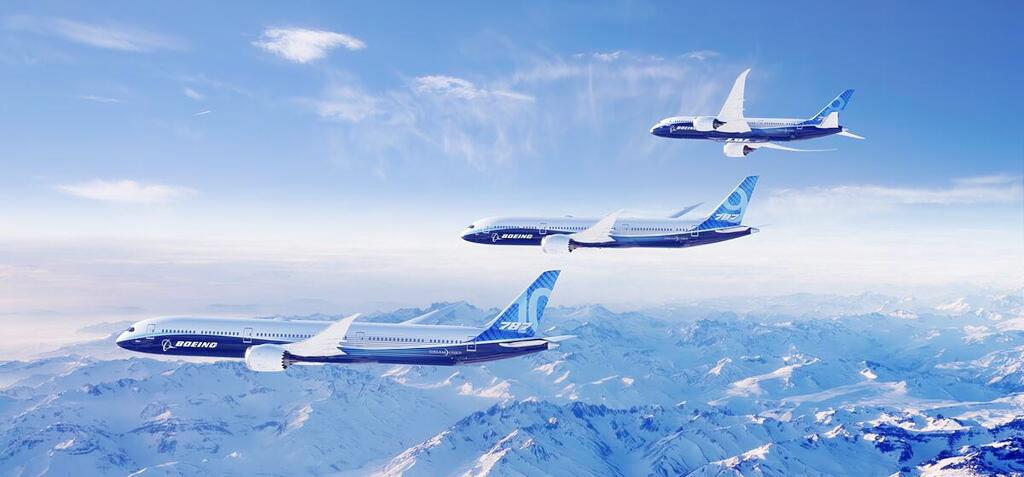
How Qatar Airways Fleet Of 41 787S Is Advancing Sustainability
Omar Arekat
Vice President of Boeing's Commercial Sales and Marketing for the Middle East
Doha, Qatar: Whenever I fly on Qatar Airways, am reminded that airline leaders and the commercial Aviation industry are dedicated to achieving a shared goal: net zero carbon emissions by 2050. In 2021, member airlines of the International Air transport Association (IATA) committed to this ambition and the aviation sector continues to make impactful changes to operations and offerings to further sustainability. Qatar Airways is at the forefront in these efforts to reduce the environmental impact of air travel.
The airline reinforces its commitment for a more sustainable aviation by operating one of the youngest fleets in the sky. The 787 family generates lower carbon dioxide (CO2) emissions and has significantly smaller noise footprint than the in-service Boeing airplanes they replace. Qatar Airways also strives to continually improve fuel efficiency through its fuel optimization program.
I'm proud to say that Boeing is an integral part of Qatar Airways' sustainability journey.
Qatar Airways operates 41 Boeing 787 Dreamliners in its fleet, one of the most innovative and efficient airplanes flying today. The Dreamliner is designed with sustainability at its core, incorporating cutting-edge technologies to optimize environmental performance throughout its lifecycle.
Fuel Consumption Reduced
Four key technologies on the 787 Dreamliner contribute to a 25% improvement in fuel use compared with the airplanes it replaces: new engines, expanded use of lightweight composite materials, more efficient systems applications, and modern aerodynamics.
In an effort to reduce fuel consumption, Qatar Airways have also implemented over 80 fuel optimization programs aimed at reducing fuel use and identified opportunities to reduce fuel burn during all flight phases through Performance Based Navigation (PBN).
Emissions Cut
CO2 is produced as fuel is consumed. This means reducing fuel use reduces CO2 emissions. Since the first 787 entered service in 2011, the 787 family has avoided more than 165 billion pounds of carbon emissions.
Quieter Takeoffs and Landings
As airport community neighbors know, reducing the noise created by takeoffs and landings is an important measure of environmental responsibility. As with its record of continuously reducing fuel use and thus reducing emissions, Boeing has also worked to reduce the sound footprint - the distance across which airplane noise is heard.
The 787 Dreamliner family incorporates several new technologies to ensure no sound over 85 decibels - about the level of loud traffic heard from the side of the road - leaves airport boundaries. In fact, the noise footprint of the 787 is up to 60% smaller than those of the airplanes it replaces.
Point-to-Point Travel
The mission capability of the 787 Dreamliner also provides airlines, such as Qatar Airways, an environmental advantage, allowing them to offer more direct flights connecting midsized cities. The 787 family has opened 400 new nonstop routes that previously were not financially feasible.
A more direct route reduces fuel burn resulting with less emissions. Likewise, fewer takeoffs and landings reduce the total noise footprint. Studies show between 30 and 50 percent of all passengers at large hub airports are just passing through, creating congestion and other environmental impacts in a city that is neither their point of origin nor destination.
A Life Cycle Approach
From the design of a new aircraft, to its manufacture, years and years of service, and eventual retirement, Boeing ensures that every stage of Boeing's product life cycle is examined through the lens of sustainability.
Boeing is transitioning from the traditional straight-line product life cycle of“take, make, waste” to a more sustainable closed-loop system that shifts to“make, use, reuse, remanufacture, and recycle.” That includes retaining valuable components and materials to reduce waste, lower costs and keep high-value materials within aerospace.
By operating a sustainable fleet, and through its other environmental programs, Qatar Airways has been able to achieve industry-leading standards in sustainability by becoming the first airline in Middle East to secure accreditation to the highest level in the IATA Environmental Assessment Programme (IEnvA). The program is built according to the needs of the industry, so managers and business leaders will be better prepared to tackle tomorrow's demands by ensuring environmental sustainability, from initial planning stages to completion.
Sustainable Aerospace Together
Decarbonizing aerospace stands as a challenge and opportunity. It's an endeavor that demands collaboration and collective action by all sectors and stakeholders in the ecosystem - from harnessing advanced technology and enacting progressive policies to mobilizing capital, energy, and entrepreneurial spirit. Together, with our airline partners such as Qatar Airways, we are partnering with our stakeholders to propel the aerospace industry toward a more sustainable future.
Both Qatar Airways and Boeing have a range of ongoing initiatives that promote sustainability in the country with the goal to reduce environmental impact while maintaining and growing the immense societal benefits of air transportation.

Legal Disclaimer:
MENAFN provides the information “as is” without warranty of any kind. We do not accept any responsibility or liability for the accuracy, content, images, videos, licenses, completeness, legality, or reliability of the information contained in this article. If you have any complaints or copyright issues related to this article, kindly contact the provider above.
Most popular stories
Market Research

- Manuka Honey Market Report 2024, Industry Growth, Size, Share, Top Compan...
- Modular Kitchen Market 2024, Industry Growth, Share, Size, Key Players An...
- Acrylamide Production Cost Analysis Report: A Comprehensive Assessment Of...
- Fish Sauce Market 2024, Industry Trends, Growth, Demand And Analysis Repo...
- Australia Foreign Exchange Market Size, Growth, Industry Demand And Forec...
- Cold Pressed Oil Market Trends 2024, Leading Companies Share, Size And Fo...
- Pasta Sauce Market 2024, Industry Growth, Share, Size, Key Players Analys...





















Comments
No comment